Korean Curry Rice is the easiest and simplest one-pot meal (with rice of course) that’s loved by many. This Korean curry can be made with beef, pork or chicken, lots of different veggies and is perfect with rice, Danmuji and Kimchi.
Korean Curry Rice (카레라이스 -pronounced ‘ka-le-la-i-seu’) is one of those dishes I have been making since I was a kid. This was actually one of the first full meal that I ever cooked for myself!!! I was in 6th grade and it was while living in India! HAHAHA.. the irony..😂🤣
From 5th-9th grade, we lived in India because my dad’s diplomatic post was there. I loved and enjoyed eating real Indian food but the Korean Curry Rice is what I loved eating growing up in Korea before that and when my parents had to go away for a couple of weeks and I was going to be by myself (well, not totally alone as we had a staff and I had a friend over to keep me company) I realized I had to learn how to make it.
Yes, JinJoo, even as kid 🤣😂 – the most important thing to keep her happy was that she could still enjoy the yummy foods that she wanted to eat. And she realized by learning how to make it, she could have it whenever she wanted to! Wow wow what a concept!!
Why My Korean Curry Rice is Special
So it’s been hmm.. how many years since I have been cooking this dish?
OK, my brain simply cannot compute.. 🤣
I just didn’t think to post a recipe sooner because I thought there’s really no recipe to share – anyone can just follow the directions on the box and make it, right? But now with all of my blog experience, I know that there are things that I can share that people can benefit from and can help enjoy the most scrumptious version.
- Which is the best brand to use? How are the flavors different?
- By caramelizing the onions longer, it makes your curry have a wonderful sweet finish that makes it even more flavorful
- Box instructions don’t have the times, and if you overcook or undercook, it won’t be pleasant to eat
- Serving with the right set of side dishes really makes your meal more delicious
My Favorite Brand of Curry Mix
So as you can imagine, in my decades of making this dish, I have had many versions and tried many different ways. To write this post, I also tested out different brands and compared them.
For me, the winner is Ottogi brand curry mix in powder form. Ottogi is the first Korean company that made the Korean curry rice (1969) and I have to say it’s still the best. You may think they are all the same (S&B, House, Ottogi) but they are not.
S&B and House are all good too but once you taste Ottogi, you will see what I mean. I think it’s the best version for Koreans anyway. It’s a bit more full of spice than the other two, more flavorsome and a bit closer to the real Indian Masala Curry.
I kind of think the Indian Curry doesn’t work well with Kimchi because it’s just exploding with spices. But the Korean Curry Rice is milder and it just goes so well with Kimchi.
How is Korean Curry Rice different?
Korean Curry has its origins in the Japanese Curry and Japanese learned about curry from the British during the war. And of course, the British got the curry from India. So it has traveled a loong way.
Korean vs Japanese vs Indian Curry
In terms of the spice (not just hot spicy but various spices like cumin, coriander, etc) and richness, Indian Curry of course is the strongest and have the fullest flavor. Korean curry has more spice flavor than the Japanese version, especially more than the Vermont Curry (바몬드).
Spice Flavor
Indian Curry > Korean Curry > Japanese Curry
Rich Flavor
Indian > Japanese > Korean
Sauce Thickness
Japanese = Korean > Indian
Note, Korean and Japanese Curry mixes are lot thicker than the Indian curry as it’s based on a flour roux. I think this actually works better for short grain rice. But you can always add more water if you prefer it to be thinner.
Which Curry mix is for you?
Finding the right curry mix is something best explored individually but I know finding the right curry mix for you can be daunting so I am going to break it down for you a bit here.
How spicy – chili hot?
Most of these curry mixes have MILD, MEDIUM and SPICY levels. I usually go for Medium spicy. It has the right amount of kick for me.
Regular vs Vermont vs Extra Turmeric (Bekse) Curry Mix
Vermont Curry has apples and honey added which makes the curry more smoother, sweeter and mild. A little too mild for my taste.
Korean Ottogi Curry Sauce Mix below (on left) is the most classic one that’s been around for decades. The Bekse Extra Turmeric Curry on the right is a recent addition due to high popularity of turmeric in Korea as health food. I compared these 2 versions and I like the taste of the Bekse Curry better as it was more flavorful than the basic version. But there isn’t a huge difference.
FROM JINJOO!
Tips for storage
- While the rice is cooking, keep smelling the pot to avoid the rice from burning. Adjust fire if you think it’s burning. Try NOT to open the pot while it is cooking. Korean short grain rice are different from long grain rice and don’t do well when you open the pot while it’s cooking.
- You may think the yangnyeom jang sauce is pretty bland for Korean standards but this is how Korean Temple food is. It really tries to bring out the natural flavors of the ingredients which are mushrooms in this case. So do not make the sauce too strong/spicy because it will overpower the mushroom flavor.
- You can use regular sesame oil instead of perilla seed oil. It will be less aromatic but perilla seed oil has a flavor that not everyone likes and is also not easy to get in most countries so sesame oil should work fine.
- You are welcome to use other kinds of mushrooms, but try to use a variety of flavors and textures.
- An electric rice cooker can make your life much easier but you will probably not get the same wonderful flavor.
Step-by-Step Instructions for Korean Curry Rice
- Cook Rice. Follow my How to cook Rice recipe for white rice or Purple Rice.
- Cut your protein into cubes – anywhere from 3/4 inch to 1 inch. Some like their meat in big chunks, some prefer it to be smaller. I prefer it to be at least this size because otherwise, the meat will kind of disappear in your mouth. Here’s how I cut the pork belly cubes I bought from the market. Remove any excess fat while cutting.
- Peel and cut an onion into squares – again about 3/4 inch size.
- Peel and cut potato and carrot into similar 3/4 inch sizes.
- Heat a pan with about 4 tsp vegetable oil on medium heat. Add onions and sauté on medium heat for 7-8 min until edges are brown (like above) and lightly caramelized. ** Note – if you don’t like caramelized onions, just sauté for 2 min or so and go to next step.
- Add meat and sauté for 2 minutes more until meat is fully cooked and slightly browned.
- Add vegetables and cook for 2-3 more min. Keep stirring – continue to cook on medium heat.
- Add water and turn on the heat to medium high and bring to boil. Cook for 5 min while making sure it doesn’t boil over.
- Lower heat to LOW and bring down to simmer. Add curry powder mix or blocks and mix well to avoid lumps. If using blocks, it’s easier if you cut up the blocks into thinner pieces before adding to the pot so it dissolves quicker.
- Continue to simmer for 10 min or so until vegetables are tender but not too mushy. Often many will just overcook but I find that it’s really so pleasant to eat when the vegetables are just perfectly cooked and has a little bit of a soft crunch(?) to it. This way you can taste the sweetness of the carrots when you chew them.
And there you go!! You have a wonderful one-dish meal that you can cook easily. It’s great for lunch, dinner or even breakfast!
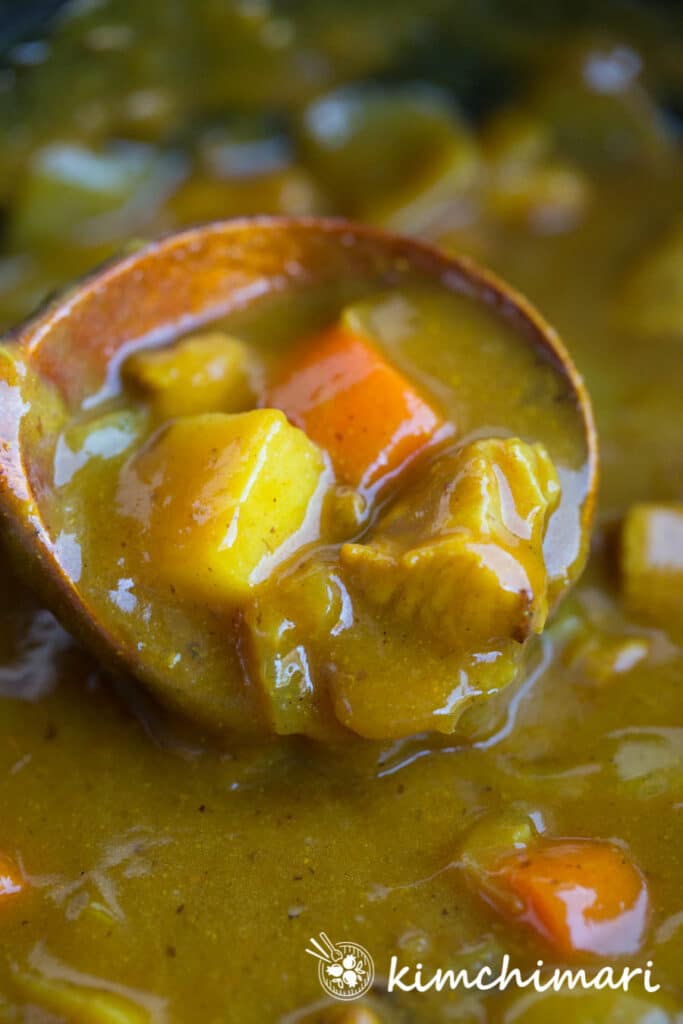
Serving Suggestions
- Serve hot on a bed of rice.
- Serve with udon noodles or other thicker noodles for Curry Noodles!
- If you like spicy, add an extra dash of Gochukaru (chili powder) for extra kick.
- Korean Curry Rice is even yummier if you serve it with the right set of side dishes. My favorite side dishes to serve are Kimchi (esp. Kkakdugi), Danmuji (yellow pickled radish) and some cabbage salad! Choose one or all and it will be wonderful! See below –
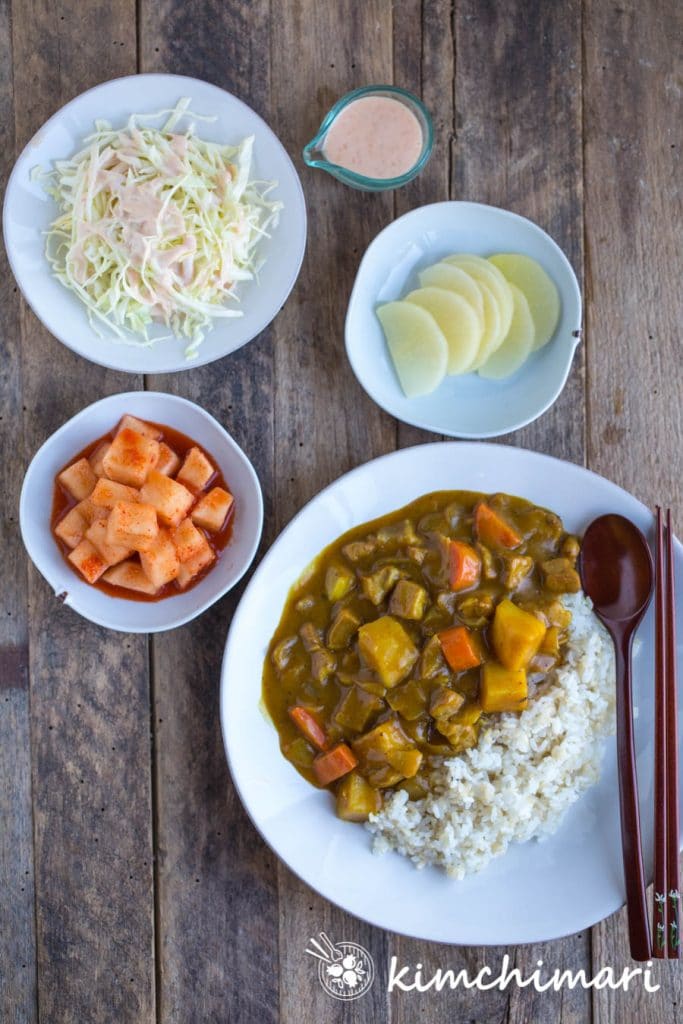
Cabbage Slaw – The top left cabbage slaw salad is one of my favorite to eat with Korean Curry Rice. Slice up some regular green cabbage and make a simple thousand island like dressing by mixing little bit of Ketchup + Mayo and a little splash of vinegar, salt and sugar.
If you liked this recipe, please leave me a comment and ☆☆☆☆☆ rating below! Thank you!
Korean Curry Rice
Ingredients
- 6 oz pork belly, beef stew meat, chicken breast or thighs
- 1 each large yellow onion 1 onion = 11 oz = 2.5 cup chopped
- 1 each potato (large russet or other creamy potatoes)
- 1 carrot
- 3 cups water
- 2 Tbsp vegetable oil or butter
- 1 packet Korean Curry Sauce Mix Ottogi, House, S&B brands all work but Ottogi has best Korean style flavor
To serve
- 1 cup cooked white rice short-grain rice works best
Instructions
- Cut your protein into cubes – anywhere from 3/4 inch to 1 inch.
- Peel and cut onion into squares – about 3/4 inch size.
- Peel and cut potatoes and carrots into similar size cubes or follow my picture to see how I cut it.
- Heat a pan with about 4 tsp vegetable oil. Add onions and sauté on medium heat for 7-8 min until edges are brown. We are basically caramelizing the onions. ** Note – if you don’t like caramelized onions, just sauté if for couple mins and add meat.
- Add meat and sauté for 2 more minutes until meat is fully cooked and slightly browned.
- Add vegetables and cook for 2-3 more min. Keep stirring – continue to cook on medium heat.
- Add water and turn on heat to medium high and bring to boil. Cook for 5 min.
- Lower heat to LOW and let it simmer. Add curry powder mix or blocks and mix well to avoid lumps. If using blocks, it’s easier if you cut up the blocks into thinner pieces.
- Continue to simmer for 10 min or so until vegetables are tender but not too mushy. Normally, people just cook it to death but I find that it’s really so pleasant to eat when the vegetables are just perfectly cooked and has a little bit of a soft crunch(?) to it. This way you can taste the sweetness of the carrots when you chew them.
Tips & Notes:
- Nutrition info may be inaccurate since it will vary one what protein you choose and also what kind of sauce mix you use.
- Try different proteins – curry is one dish where it doesn’t really matter what protein you add, it always comes out yummy. My favorite is pork belly but it works with anything. You can also try tofu or palak cheese for a vegetarian version. My favorite? I usually make ours with beef stew meat or chicken breast because my husband is allergic to pork. But my personal favorite is to make it with pork belly.
- Don’t undercook but also don’t overcook – you probably didn’t think you can overcook it but try having it when it’s just perfectly cooked and you will notice the difference in texture.
- Try different vegetables – Try adding broccoli, cauliflower, peas, asparagus and even bell peppers! Great way to hide veggies!
- Can be refrigerated for few days and can be reheated in a pot with a little bit of water or in the microwave.
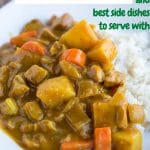
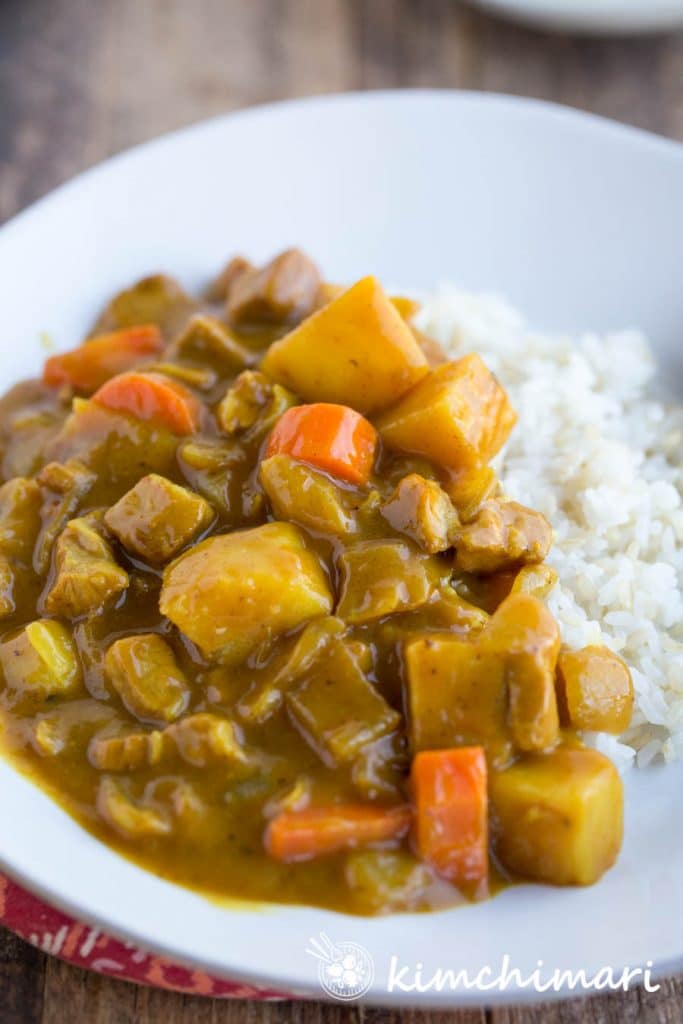

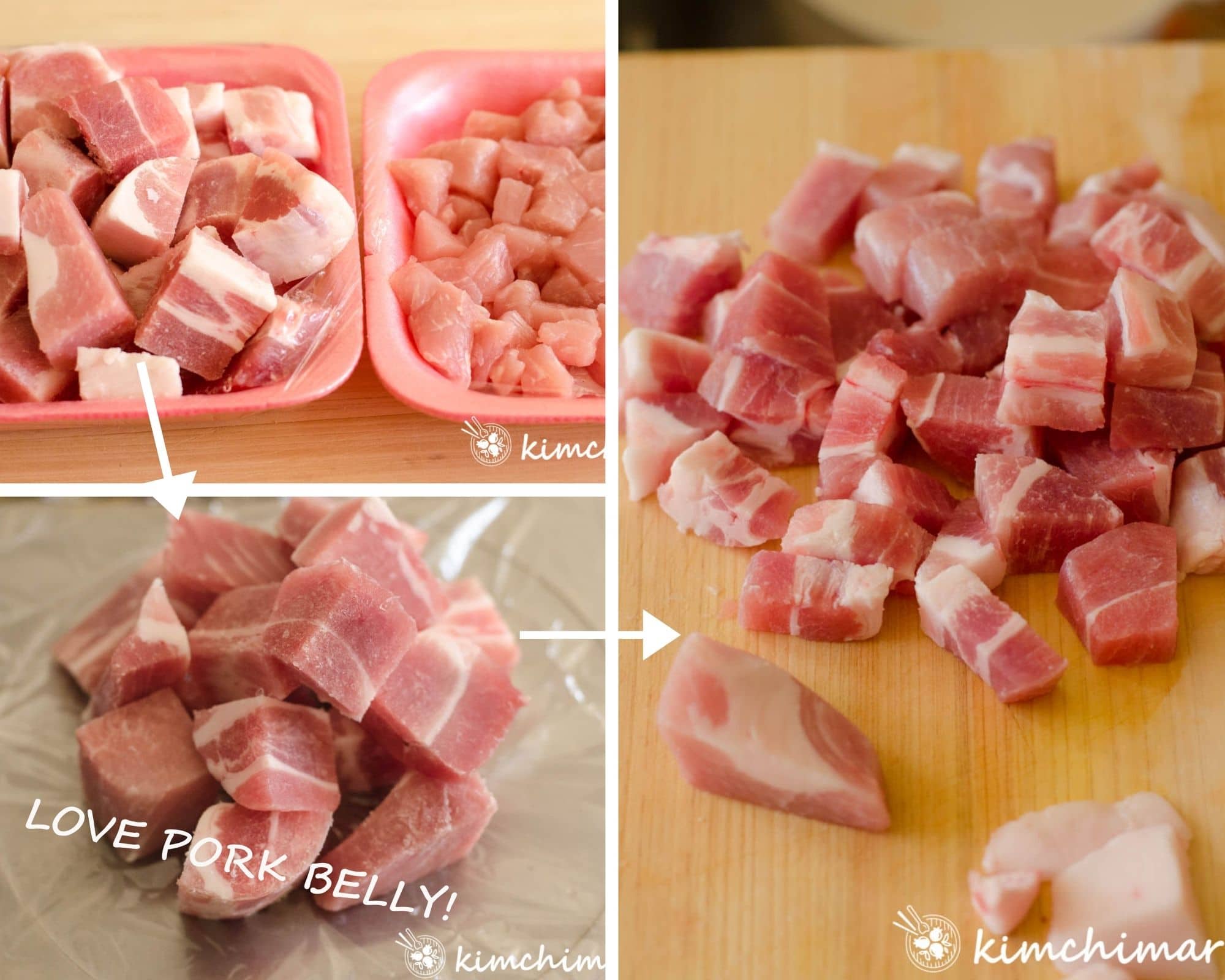
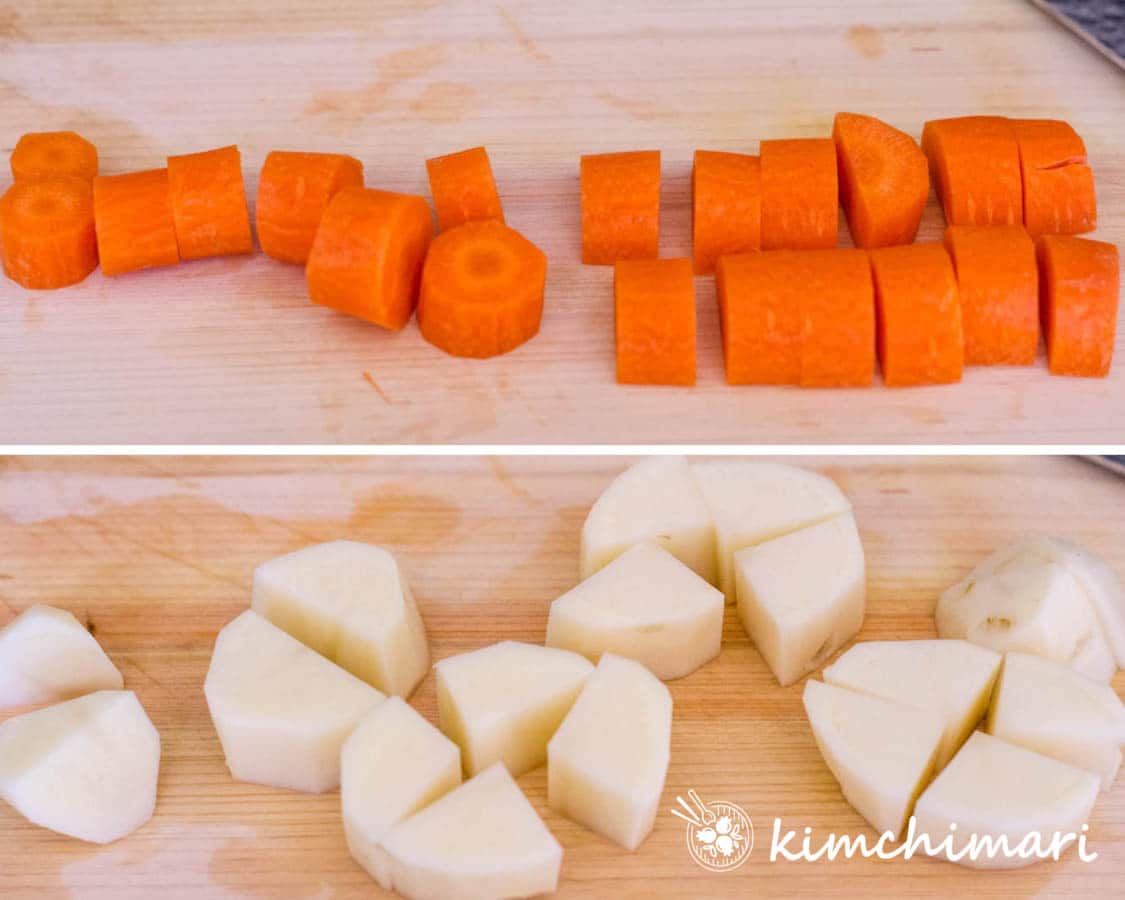
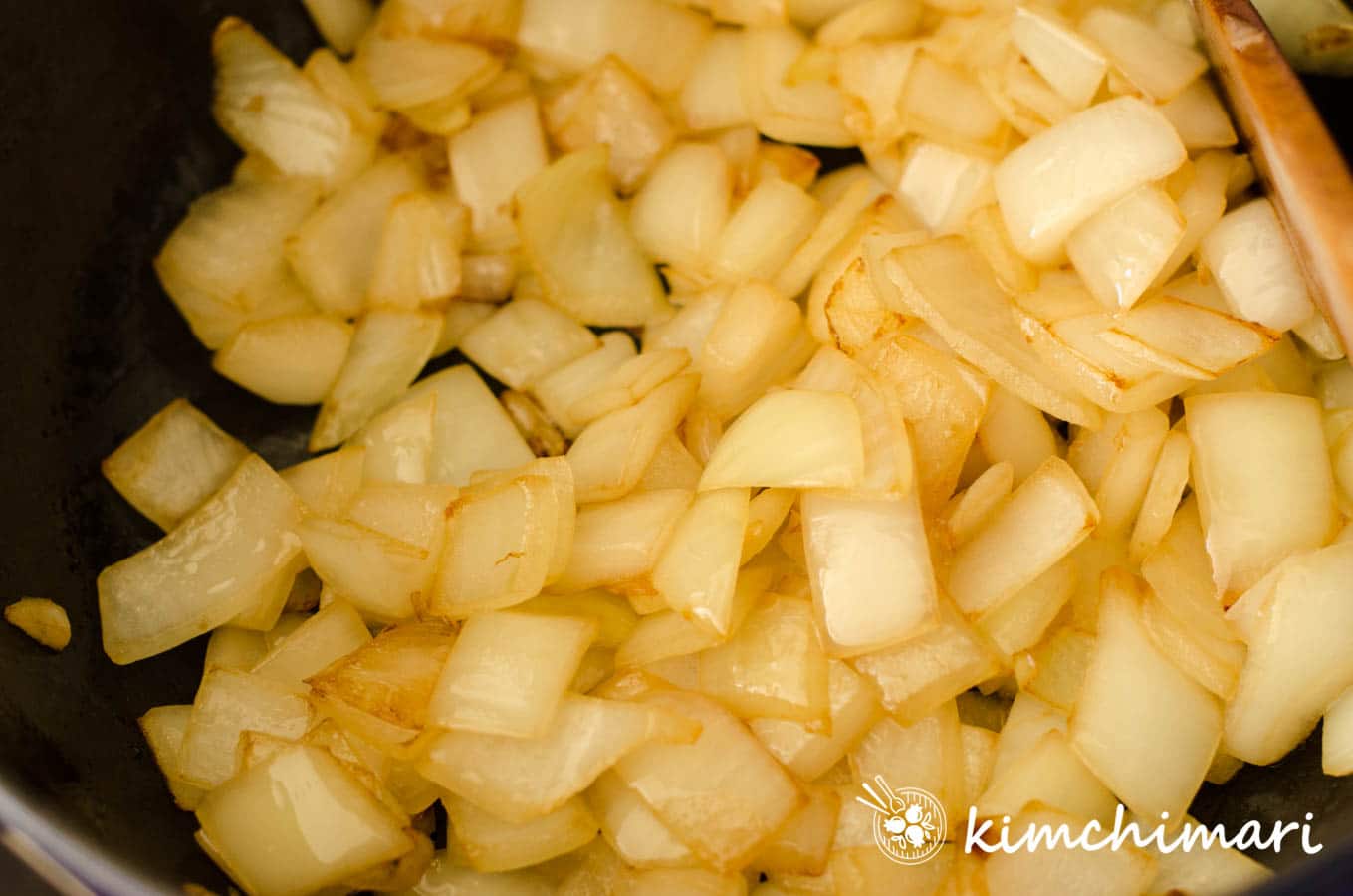
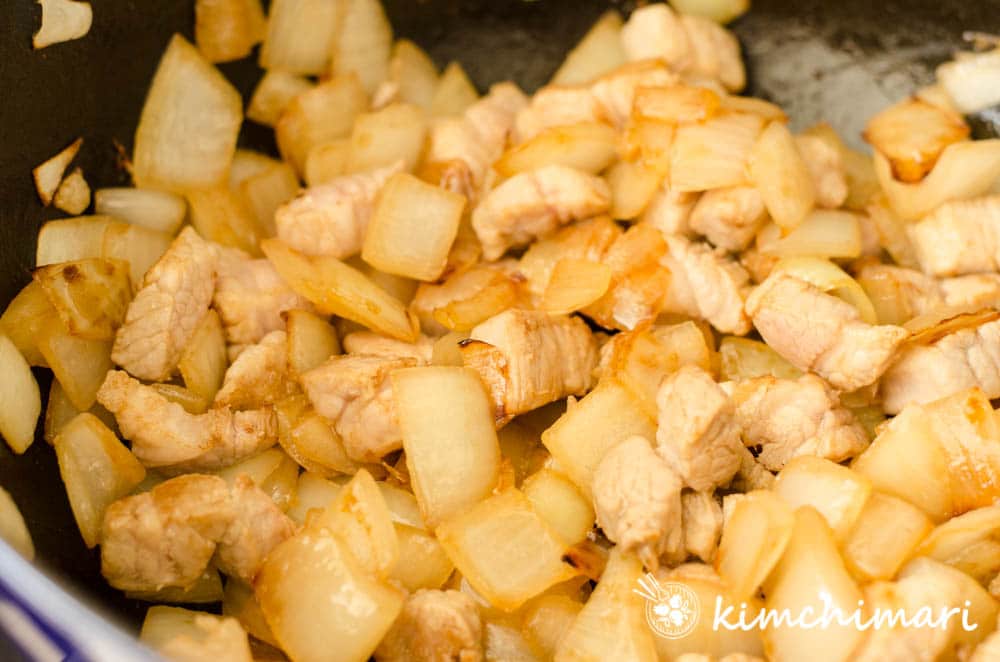
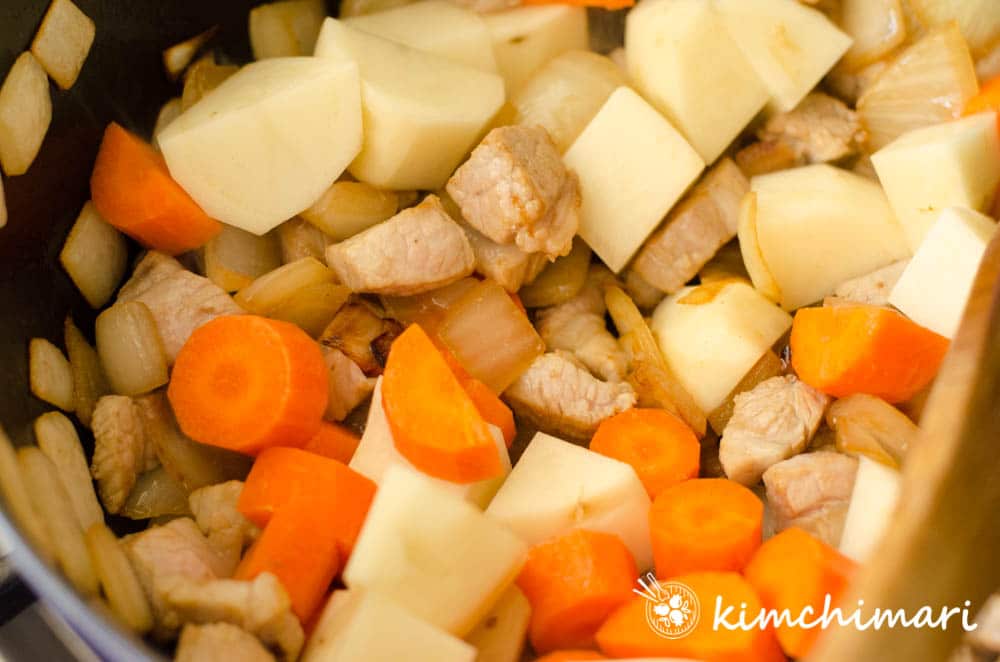
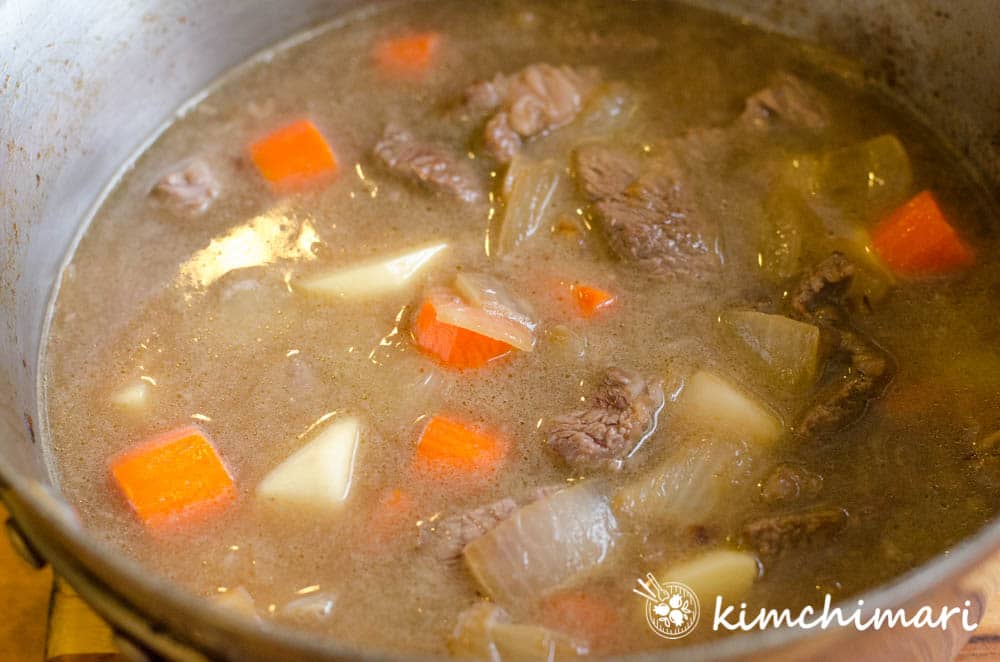
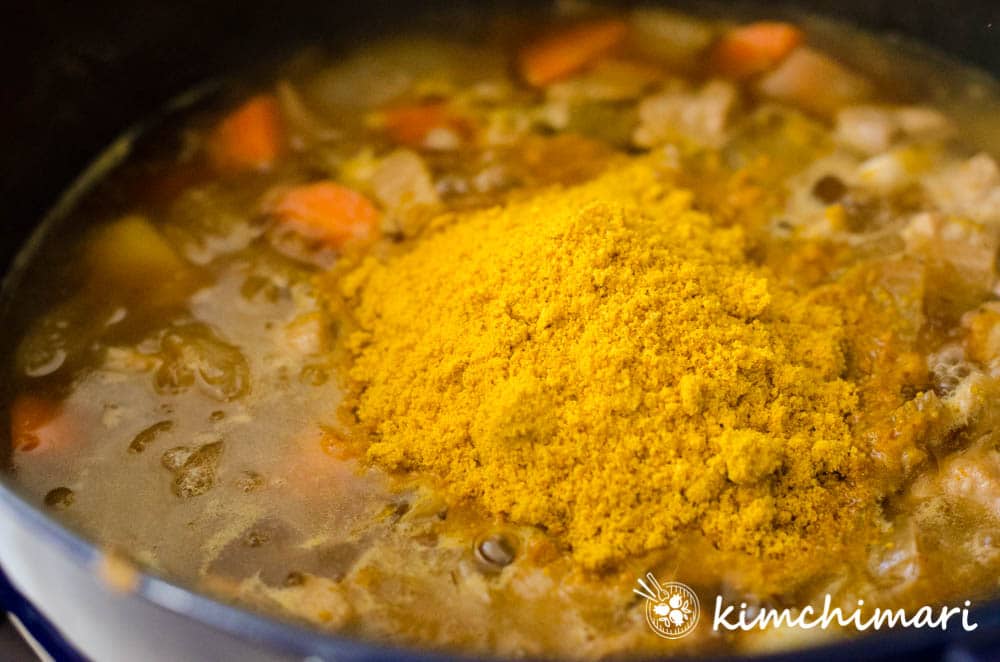
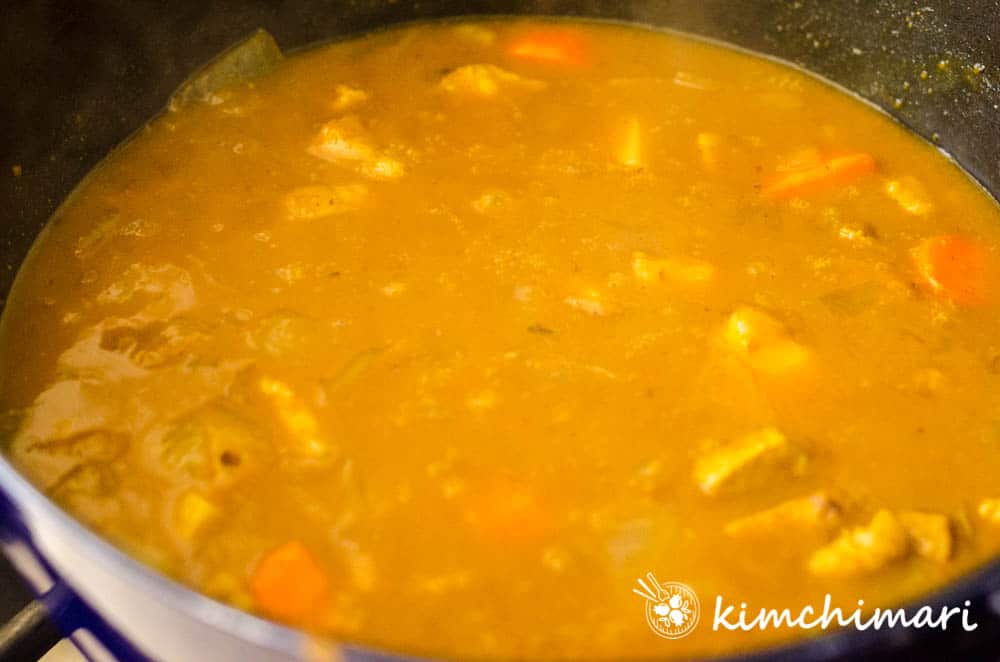
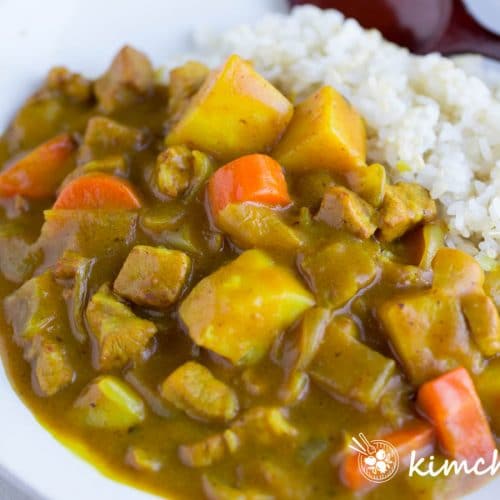
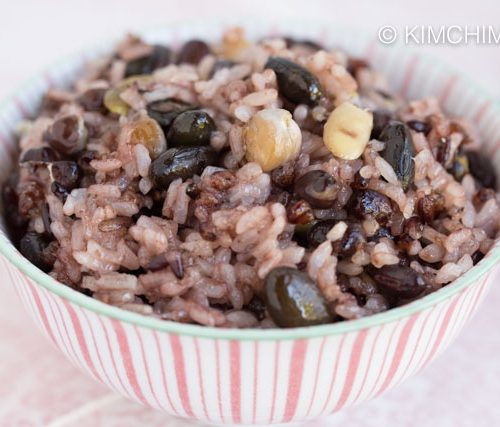
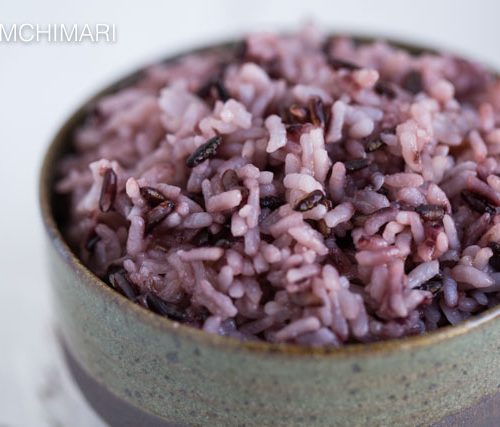

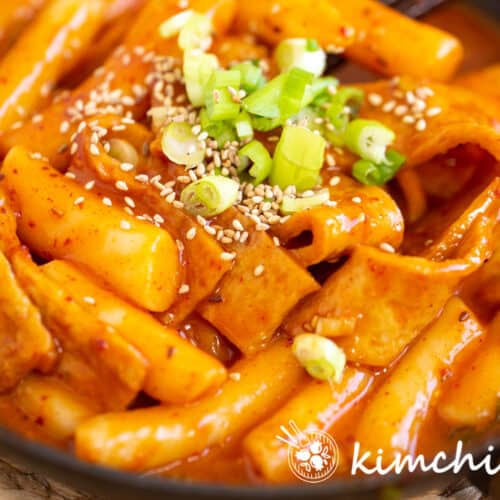
















Its delicious but does contain MSG. Most curry cubes, powders and ready to eat brands have it unfortunately. Hopefully Ottoggi can develop one with NO MSG.
Yes, you are right. Sorry about that. I did find there’s a SB Curry one that says there’s NO MSG. You can also look up ‘curry blocks’ recipes on Japanese recipe sites and make your own without MSG. But then that’s a lot of work I know.. Thank you!
Do you have this recipe from scratch? The ingredient list are not great in the packaged curry. I have eaten this as a child but now trying to be healthier. I would love a healthier version please. Thank you.
Hi Suyon, I know.. I wish I had a recipe to make it from scratch. I will work on it – hopefully soon! I hope you are subscribed to my newsletter so you can get updates. Cheers!
Really appreciate the expert tips and instructions – thank you so much! Came out great.
Awesome!! So happy to hear that!
Love this post! I like adding an apple to my curry for sweetness.
Of course!! There’s even a Japanese curry mix that adds honey and apple so you are so smart to do it!! Enjoy!
I thnink noraml Japanese curry is much spicier than normal Koran curry. Korea curry is very mild.
Easy and delicious!
thank you!! Glad you enjoyed it.